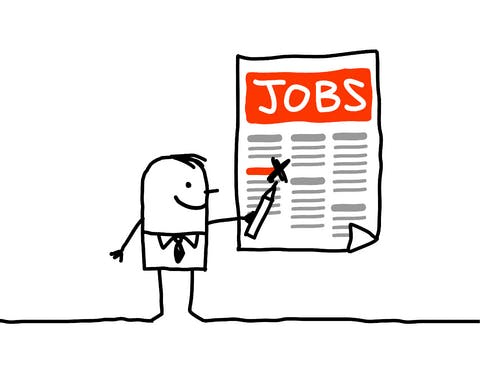I’ve written before about how managers hated job descriptions.
Now, let’s take a fresh perspective and look at how writing descriptions should be handled.
Call this a beginner’s guide, a how-to procedural, or simply a few tips ‘n tricks that can work wonders.
Starting checklist
The process of writing descriptions doesn’t have to be a pain in the butt. It may never be a favorite activity, but we can take away much of the sting. A win-win strategy can take a more simple and straightforward approach.
- A short and standardized form so that all descriptions look the same. Two pages, no more.
- Describe the basic purpose of the job – a brief summary that answers the question, “why does this job exist?“
- Focused bullet statements that describe only critical responsibilities. Explain what is key to the impact and import of the job.
Extra toppings
Unfortunately many organizations require more than these basic essentials. They’re looking for what I call the “extra toppings,” a combination of ancillary information, feel-good statements and subjective information that often doesn’t help.
If the idea is to describe the job, do we need to talk about candidate qualifications? And who is deciding this? Check whether incumbent employees meet those qualifications.
Length of experience? That’s another subjective area whose inclusion is intended to distinguish between core and senior level jobs. This is a poor short cut to differentiating responsibilities.
More useful is a list of knowledge and skill requirements that a candidate must (or is preferred to) have. This helps recruiters screen candidates.
Have a care before you ask for educational requirements, unless your legal staff can defend you. Many use an “equivalency” phrase, but who understands that?
Is heavy lifting required? Perhaps travel? Maybe it’s an outdoor job with dusty working conditions. Nothing wrong here, but does it need to be written down, or could it be verbalized to the recruiter/candidate – or simply assumed?
Sometimes an organization will add text in order to comply with government regulation. When the Americans with Disabilities Act was announced, companies scurried to revise descriptions that included acceptable language. That language didn’t change the role of the job, and arguably didn’t have much of an impact on candidate selection, but the lawyers were happy.
Have a care that your additional content requirements don’t become too extreme.
How to write a job description
- Use bullet statements, not run-on sentences. Short and sweet. Focus on key words. A rule of thumb is to have at least four, and no more than eight bullets. Beyond that you’re either repeating or listing secondary responsibilities.
- Start each bullet with a strong verb, like plan, develop, advise, etc. Powerful action more easily identifies either a direct or support role.
- Avoid weak verbs like assist (what does that mean?), coordinate or work with. Here the reader isn’t exactly sure of the job’s impact or import.
- Avoid flowery language, puffery that adds little clarity. “Drive and have a passion for X,” “Be the expert for …“ and “serve as a thought partner” are taken from an actual client description.
- Throw away subjective adjectives that aim at the how, not the what (excellent, strong, persuasive, etc.).
- Write the description without being influenced by an incumbent’s background and experience.
- Write the basic purpose last. Once you’ve already prepared the bullets it’s straightforward to complete the summary.
The manager’s friend
Remember what you’re trying to accomplish. On the one hand to prepare effective job descriptions, but at the same time to make the process easier for the manager – the one responsible for getting them written. You want a win-win scenario.
So here are a few thoughts to help elevate you to hero status with your managers:
- Short and simple; managers can get behind that. Resist the temptation of “specialists’ who tell you all the extra toppings you need. Short forms are completed faster – with less complaints.
- Purchase a job description source book. A Google search will show several quality sources. If you send managers a generic copy of a like description, they’ll have an easier time writing the proper description.
- Use the manager as the “editor,” the subject matter expert who reviews the description. They should do that anyway, but it’s a treat when you’re not expecting them to write the darn thing.
- Offer to help. Be careful here, so you don’t get sucked in, but offering training support up front can remove some of the sting of having to do something they’d prefer to avoid.
- If some of the “extra toppings” are generic (i.e., ADA or other compliance language), tell the manager that they don’t have to worry about that stuff. HR will add it in later.
Good luck out there. Now you know how to keep managers from chewing off your head.
This was originally published at the Compensation Café blog, where you can find a daily dose of caffeinated conversation on everything compensation.
